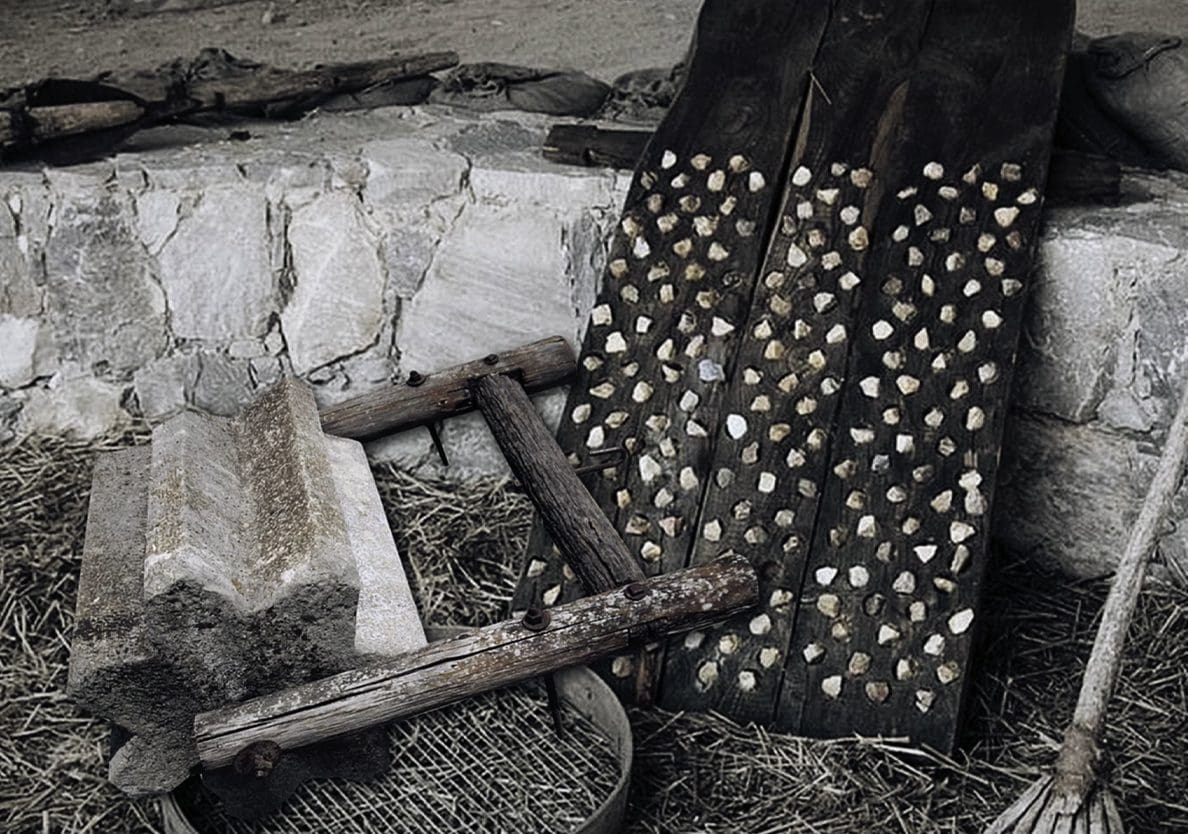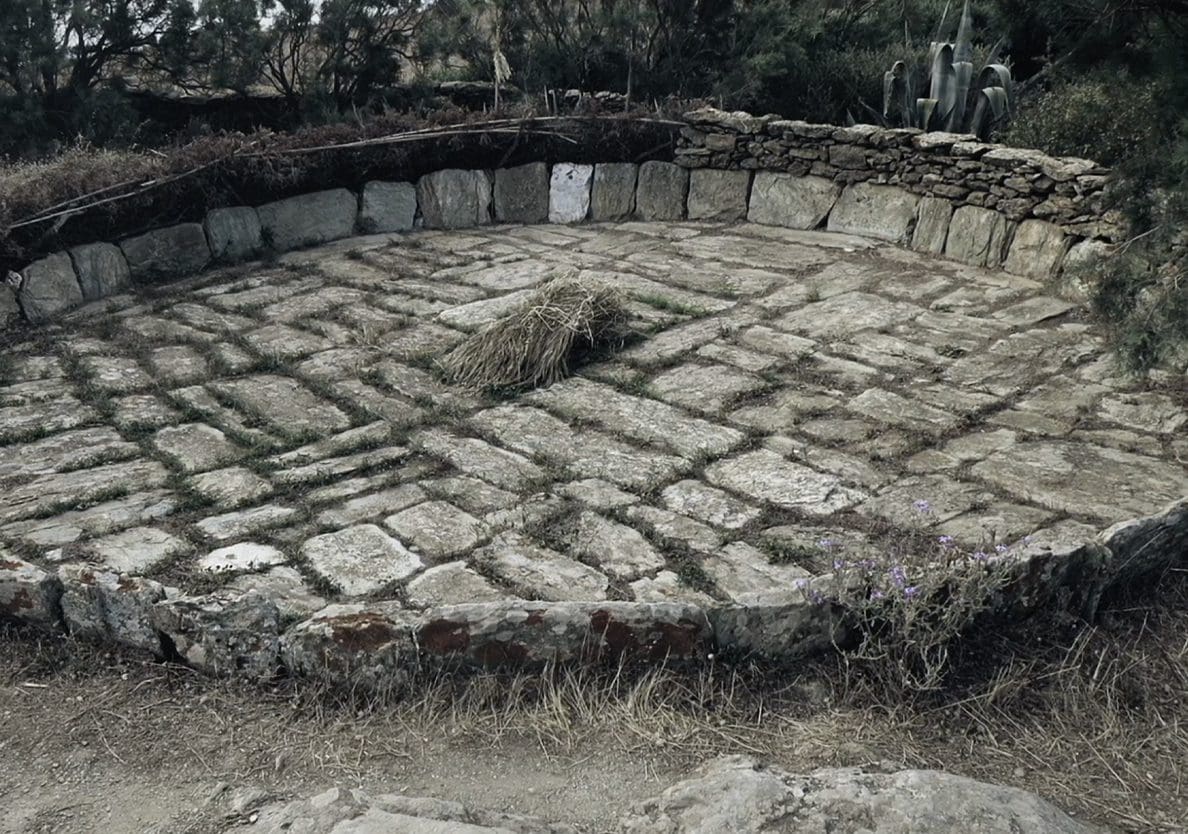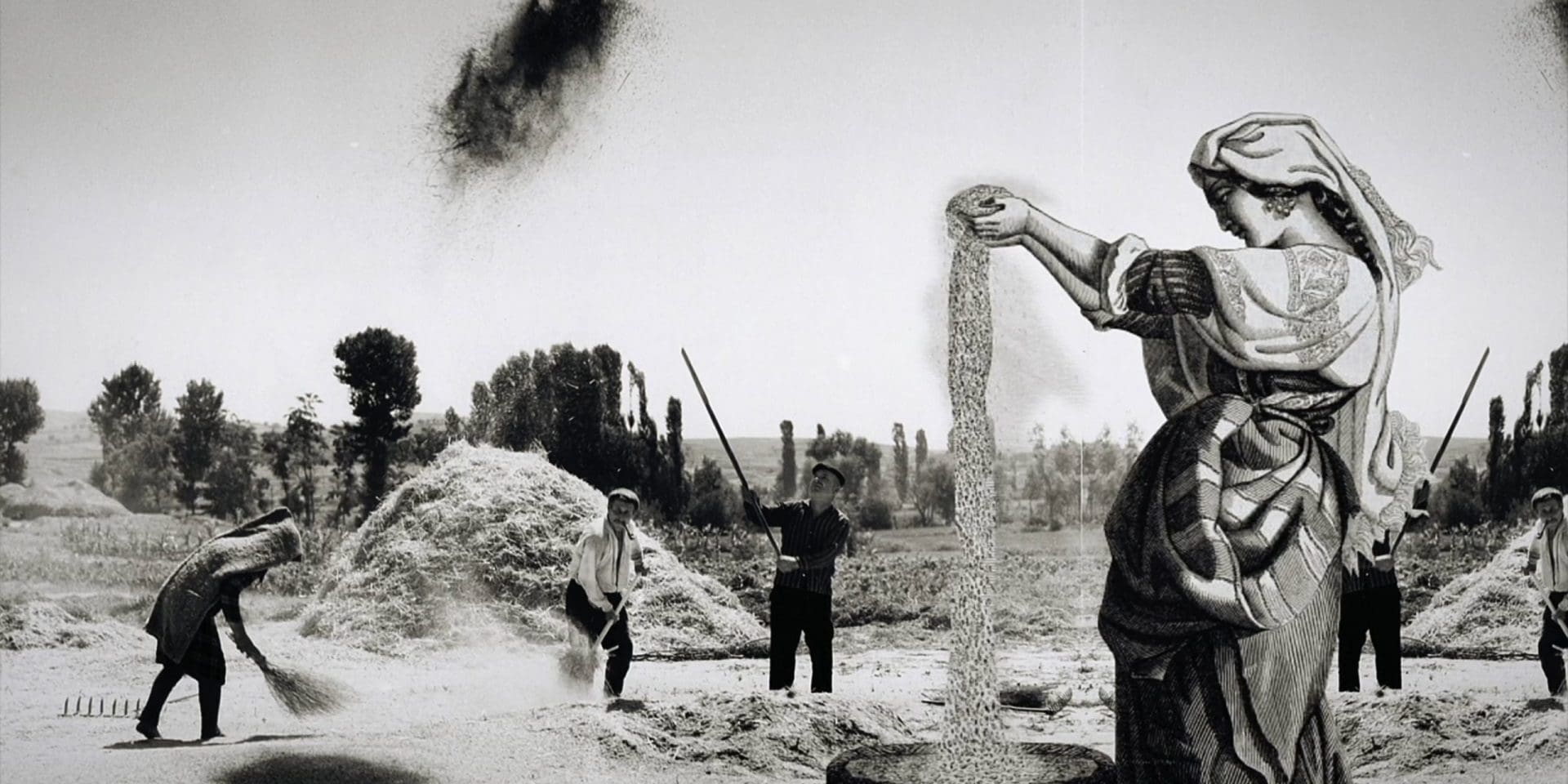In the Bible, harvest time is referenced both as an actual practice and as a useful metaphor. Ancient Israel was an agricultural (agrarian) society, their very survival depended on farming innovations and consistency. So, when the time of reaping their produce came, it was occasion for great celebration and joy as much as hard work (Isaiah 9:2-3; Psalm 126:5). The production of cereal grains has been called the backbone of ancient Israelite society and was largely composed of wheat and barley. Let’s look at the wheat harvest as a model of harvesting and threshing.
The wheat harvest took place during the summer and could overlap with the beginning of the grape harvest, making it a very busy and happy time of year. The reaping of the wheat came first and could be done by hand or sickle. If by hand, the entire plant would be pulled up from the roots, possibly to avoid disturbing the ripe heads of grain and losing some to spillage. This practice may be behind the prophet Jeremiah’s usage of the phrase, “to plant and to uproot” (Jeremiah 31:28; 42:10; 45:40).


To reap large fields of wheat, whole teams of people would normally be employed. A foreman would oversee the work, reapers would make their way through the fields armed with sickles of flint or metal, and cut the stalks either halfway, leaving some of the plant still standing as straw for animals to eat, or for collection for different use. Wheat stalks could also be cut closer to the head of grain to minimize the work of winnowing later on.
After the reapers would come, teams of young men and women who would organize the cut stalks in to piles and tie them into bundles called sheaves. Once the reaping was completed, the sheaves would be carried to the threshing floor. Behind the teams of reapers and binders, gleaners would walk and pick up all the wheat that was missed or left over in order to feed themselves or their families. The location of local threshing floors likely would have varied from area to area, as they needed to be in a windy location. Here, the stalks of wheat were turned into three products of varying worth: grain, straw, and chaff.
“This practice may be behind the prophet Jeremiah’s usage of the phrase, “to plant and to uproot.””
Jeremiah 31:28; 42:10; 45:40
The first step processing the wheat was to cut the plant up, to separate the valuable grain seeds from the plant stalks. This could be done by threshing stick, animal, threshing sledge, or threshing wheel. Threshing sticks wielded by harvesters would be used to beat smaller amounts of grain, maybe even for a quick meal, or on products that had smaller seeds (Isaiah 28:27). Animals like oxen, with or without metal shoes (Micah 4:12) could be driven over the plants to crush them into pieces. Effective threshing sledges were also drawn by animals, they were boards inlaid with sharp stones and metal to chop the plants. And threshing wheels were carts made with rows of stone and metal inlaid wheels to accomplish the same.
The chopped-up wheat was then winnowed. Using wooden fork like shovels, harvesters would throw the mixture high into the air to catch the wind. The different weights of the products meant that the wind would carry them different distances. The light and nearly useless chaff would be carried the farthest, the straw would fall closer to the harvester and the valuable, heavy grain would fall closest to them. The grain would be tossed up for another chance at blowing away remaining chaff, then passed through a few sieves before being measured for taxation and stored for human consumption.

Corie Bobechko is a daily co-host, speaker, and writer of Bible Discovery. She also hosts a YouTube channel that shows how history and archaeology prove the Bible. Her heart for seekers and skeptics has led her to seek truth and share it with others. Corie also has a Bachelor of Theology from Canada Christian College.






